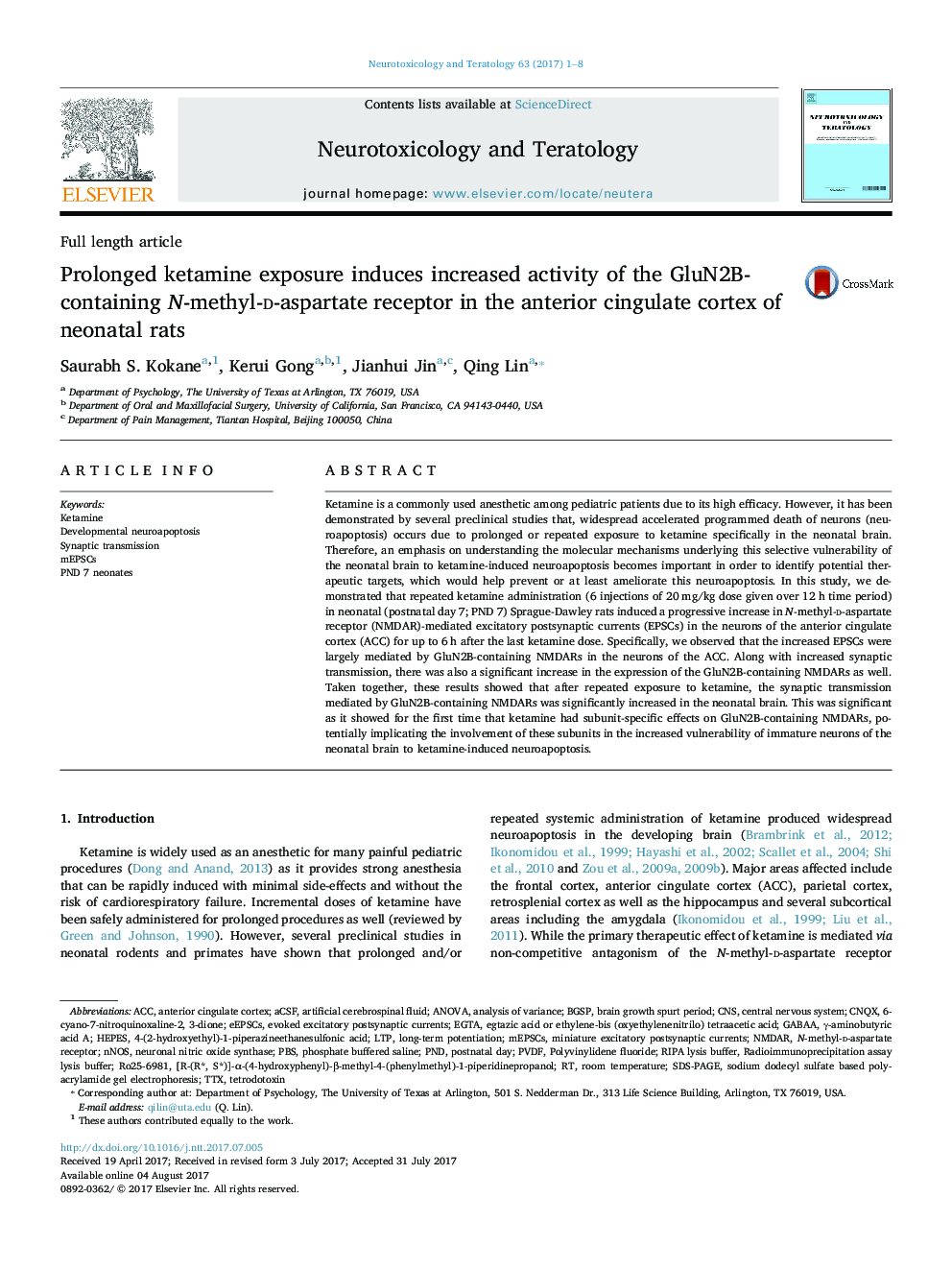| کد مقاله | کد نشریه | سال انتشار | مقاله انگلیسی | نسخه تمام متن |
|---|---|---|---|---|
| 5561025 | 1562073 | 2017 | 8 صفحه PDF | دانلود رایگان |

- Repeated ketamine administration led to increased NMDAR channel activity after ketamine washout in immature neurons.
- Increased NMDAR channel activity was predominantly mediated by GluN2B-containing NMDARs.
- Specific vulnerability of immature neurons to ketamine-induced neuroapoptosis could be result of GluN2B-containing NMDARs.
Ketamine is a commonly used anesthetic among pediatric patients due to its high efficacy. However, it has been demonstrated by several preclinical studies that, widespread accelerated programmed death of neurons (neuroapoptosis) occurs due to prolonged or repeated exposure to ketamine specifically in the neonatal brain. Therefore, an emphasis on understanding the molecular mechanisms underlying this selective vulnerability of the neonatal brain to ketamine-induced neuroapoptosis becomes important in order to identify potential therapeutic targets, which would help prevent or at least ameliorate this neuroapoptosis. In this study, we demonstrated that repeated ketamine administration (6 injections of 20Â mg/kg dose given over 12Â h time period) in neonatal (postnatal day 7; PND 7) Sprague-Dawley rats induced a progressive increase in N-methyl-d-aspartate receptor (NMDAR)-mediated excitatory postsynaptic currents (EPSCs) in the neurons of the anterior cingulate cortex (ACC) for up to 6Â h after the last ketamine dose. Specifically, we observed that the increased EPSCs were largely mediated by GluN2B-containing NMDARs in the neurons of the ACC. Along with increased synaptic transmission, there was also a significant increase in the expression of the GluN2B-containing NMDARs as well. Taken together, these results showed that after repeated exposure to ketamine, the synaptic transmission mediated by GluN2B-containing NMDARs was significantly increased in the neonatal brain. This was significant as it showed for the first time that ketamine had subunit-specific effects on GluN2B-containing NMDARs, potentially implicating the involvement of these subunits in the increased vulnerability of immature neurons of the neonatal brain to ketamine-induced neuroapoptosis.
Journal: Neurotoxicology and Teratology - Volume 63, September 2017, Pages 1-8